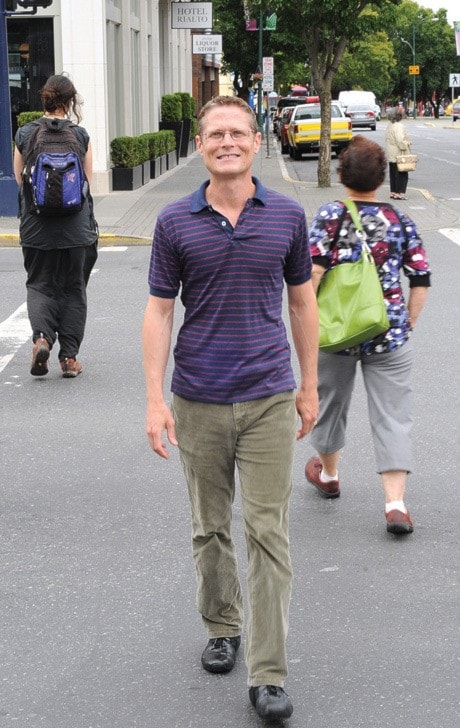Call it a test run.
A new plan for downtown Victoria is meandering its way through city hall, paving the way for a different approach to city planning at the micro level.
Neighbourhood plans are decades old in many cases, and change is on its way to a street near you. Don’t expect a simple update to outdated plans, however.
It’s about being strategic, said senior planner Cameron Scott.
“Originally we had gone forward with this idea of planning neighbourhoods, one by one, as we had done historically,” Scott said.
Public feedback, however, called for a different approach.
“What people said was to strategically focus on village areas, corridors and other parts of the city that don’t necessary follow neighbourhood boundaries,” he explained.
Hence the local area plan.
Unlike a neighbourhood plan, the local area plan zooms in on areas of change and growth, which can occur inside a single neighbourhood and sometimes span several neighbourhoods.
The downtown core area plan, for instance, encompasses all of the downtown, Harris Green, the southern portion of North Park and Burnside Gorge, and smaller sections of James Bay and Fairfield.
It promises better results for no man’s lands -- i.e. hot zones caught between two neighbourhoods.
Doug Rhodes, chair of the Quadra Hillside Neighbourhood Plan, illustrates the point while standing along his community’s western border.
It’s hard for pedestrians to cross Blanshard Street to get to Mayfair Shopping Centre, he points out. The 1.5-kilometre stretch, between Bay Street and Tolmie Avenue, has only two crosswalks.
“There’s two islands on either side of Blanshard,” said Scott. That’s because neither the Burnside Gorge Neighbourhood Plan, to the west, nor the Quadra Hillside Neighbourhood Plan to the east, looked explicitly at the major roadway.
“Doing a corridor study allows you to look at those types of interventions,” he said.
North Park Village is another example of an area split down the middle, added Scott. A new local area plan for the village will be involving “people from Fernwood and people from North Park, and really looking at a vision for that area.”
The new approach to planning has spurred some concern from neighbourhood associations, however.
These micro-governments, charged with reviewing all land-use decisions within their borders, fear losing some jurisdiction as neighbourhood plans take a back seat to local area plans.
“I think we’ve created a fair amount of uncertainty,” said Coun. Pamela Madoff, after a presentation of the draft downtown core area plan.
There is a perception the downtown is pushing outward, because the study area of the core has been expanded, explained Madoff.
As the council liaison for the North Park Association, Coun. Philippe Lucas echoed the concern.
While calling the plan a “great piece of work,” he acknowledged that lumping a portion of North Park in with the core has “raised some concern there are going to be some big buildings beside them.”
Scott, however, said the downtown core area plan is in draft form and the boundaries of the study area are still up for discussion.
“Neighbourhood plans will continue to exist and provide direction for council. Once the local area plan is completed … we would update relevant portions of the neighbourhood plans through which it falls.
“There still is a lot of good directions in those plans.”
Local area planning
n The city has no time line for completing local area plans, but has prioritized areas according to need.
Phase one includes the downtown core, followed by the Douglas Street corridor, responding to possible investment by B.C. Transit.
Next up, the city will focus on the Fort Street Corridor and the eastern half of Vic West.
Phase three looks at the Hillside corridor, and lastly, phase four looks at nine village plans including Moss Street Village, Haultain Corners and James Bay Village.
